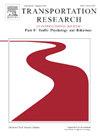从焦虑到攻击:反社会特质和自我调节功能障碍在道路行为中的作用研究
IF 3.5
2区 工程技术
Q1 PSYCHOLOGY, APPLIED
Transportation Research Part F-Traffic Psychology and Behaviour
Pub Date : 2025-05-01
DOI:10.1016/j.trf.2025.04.020
引用次数: 0
摘要
研究表明,攻击性驾驶行为(ADBs)通常是由情绪冲动引发的。然而,迄今为止,很少有研究探讨焦虑情绪如何转化为道路上的攻击性。本研究的主要目的是探讨焦虑与ADB之间的联系,并探讨反社会(精神病)特征、愤怒反刍和情绪失调对这种关系的调节作用。为了实现这一目标,澳大利亚成年司机的样本(N = 386;女性占61%;法师= 50岁)完成在线调查电池。方差分析显示,驾驶焦虑、愤怒反刍、情绪失调、反社会特征和ADBs在轻度、中度和重度广泛性焦虑组之间存在显著差异;分数越高,焦虑程度越严重。其次,相关分析表明,焦虑(广义和驾驶相关)、愤怒反刍、反社会特质、驾驶愤怒和各种adb之间存在显著的正相关。最后,适度分析表明,驾驶焦虑以独特的方式影响adb,这取决于参与者的愤怒反刍、情绪失调和反社会特征的背景。具体而言,条件效应表明,在考虑低水平的愤怒反刍后,驾驶焦虑负向预测ADB,当情绪失调程度高、反社会特质程度中高时,发现驾驶焦虑正向预测ADB。本研究的发现提供了一个更好的理解驾驶焦虑如何表现为异常和情绪导向的行为时,在道路上驾驶。这些发现可以为未来的道路安全研究和实践提供信息,了解自我监管因素在理解和干预ADB方面发挥的潜在作用。本文章由计算机程序翻译,如有差异,请以英文原文为准。
From anxiety to aggression: An investigation into the roles of antisocial traits and self-regulatory dysfunction in road behaviours
Research has shown that aggressive driving behaviours (ADBs) are often initiated via emotional impulses. However, little research to date has explored how feelings of anxiety may translate to aggression on the road. The primary aim of this study was to investigate the links between anxiety and ADB, and to explore the moderating influences that antisocial (psychopathic) traits, anger rumination, and emotion dysregulation hold toward this relationship. To achieve this, a sample of adult Australian drivers (N = 386; 61 % women; Mage = 50 years) completed an online survey battery. A MANOVA revealed that driving anxiety, anger rumination, emotion dysregulation, antisocial traits, and ADBs significantly differed between groups categorised by mild, moderate, and severe generalised anxiety; with higher scores largely being tied to more severe anxiety. Next, correlational analysis indicated that there were significant positive associations between anxiety (generalised and driving-related), anger rumination, antisocial traits, driving anger, and various ADBs. Finally, moderation analyses suggested that driving anxiety influenced ADBs in unique ways, depending on the context of participants’ anger rumination, emotion dysregulation, and antisocial traits. Specifically, conditional effects showed that where driving anxiety negatively predicted ADB after accounting for anger rumination at low levels, it was found to positively predict ADB when emotion dysregulation was high and antisocial traits were moderate or high. The findings of this study provide a greater understanding of how driving anxiety may manifest into aberrant and emotion-directed behaviours when driving on the road. Such findings could inform future road safety research and practice about the potential roles that self-regulatory factors play in understanding and intervening on ADB.
求助全文
通过发布文献求助,成功后即可免费获取论文全文。
去求助
来源期刊
CiteScore
7.60
自引率
14.60%
发文量
239
审稿时长
71 days
期刊介绍:
Transportation Research Part F: Traffic Psychology and Behaviour focuses on the behavioural and psychological aspects of traffic and transport. The aim of the journal is to enhance theory development, improve the quality of empirical studies and to stimulate the application of research findings in practice. TRF provides a focus and a means of communication for the considerable amount of research activities that are now being carried out in this field. The journal provides a forum for transportation researchers, psychologists, ergonomists, engineers and policy-makers with an interest in traffic and transport psychology.

 求助内容:
求助内容: 应助结果提醒方式:
应助结果提醒方式:


